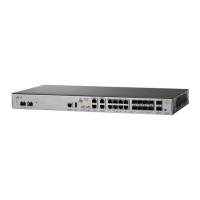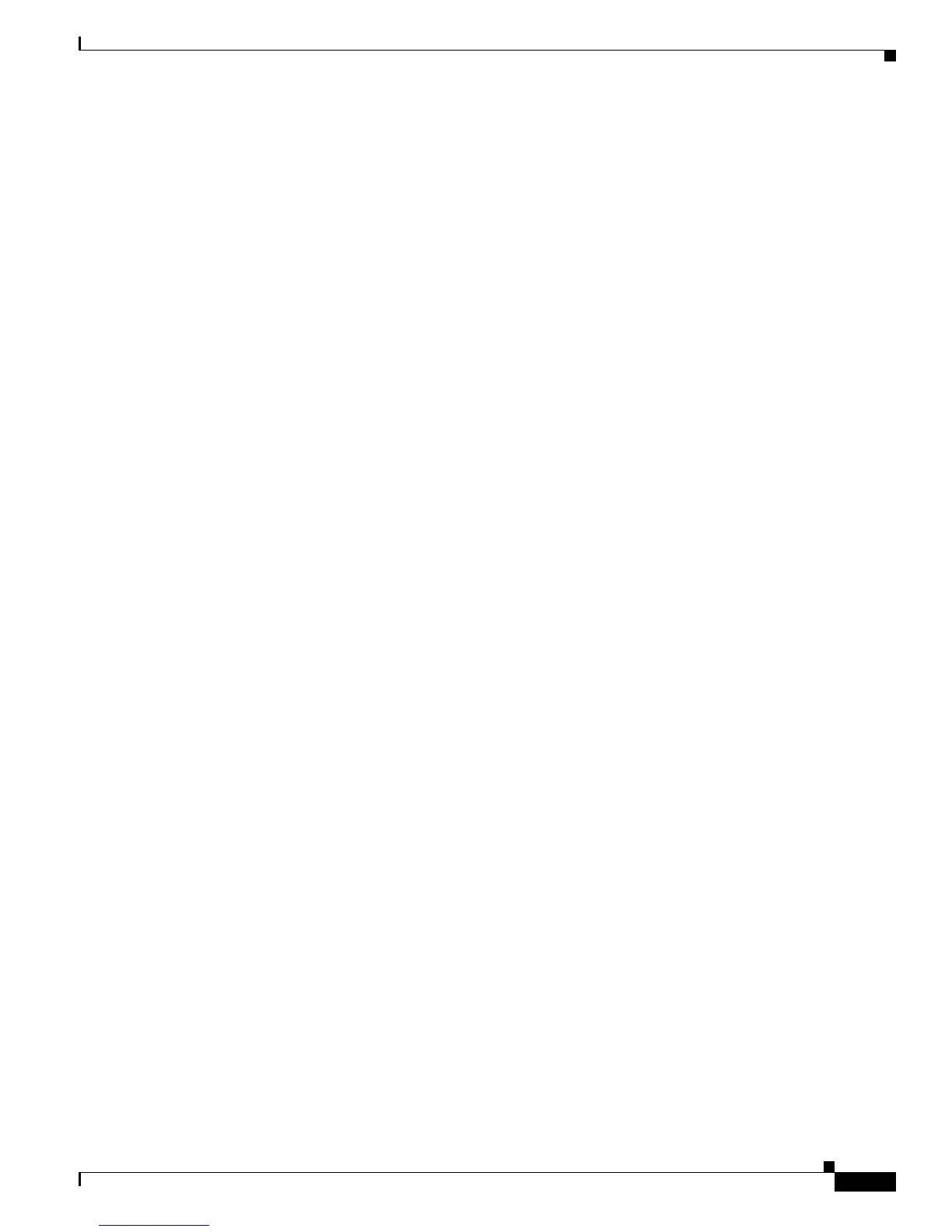1-97
Cisco ASR 901 Aggregation Services Router Command Reference Guide
OL-26031-07
Chapter 1 CLI Command Reference
police (two rates)
Token Buckets
Two-rate traffic policing uses two token buckets—Tc and Tp—for policing traffic at two independent
rates. Note the following points about the two token buckets:
• The Tc token bucket is updated at the CIR value each time a packet arrives at the two-rate policer.
The Tc token bucket can contain up to the confirm burst (Bc) value.
• The Tp token bucket is updated at the PIR value each time a packet arrives at the two-rate policer.
The Tp token bucket can contain up to the peak burst (Be) value.
Updating Token Buckets
The following scenario illustrates how the token buckets are updated:
A packet of B bytes arrives at time t. The last packet arrived at time t1. The CIR and the PIR token
buckets at time t are represented by Tc(t) and Tp(t), respectively. Using these values and in this scenario,
the token buckets are updated as follows:
Tc(t) = min(CIR * (t-t1) + Tc(t1), Bc)
Tp(t) = min(PIR * (t-t1) + Tp(t1), Be)
Marking Traffic
The two-rate policer marks packets as either conforming, exceeding, or violating a specified rate. The
following points (using a packet of B bytes) illustrate how a packet is marked:
• If B > Tp(t), the packet is marked as violating the specified rate.
• If B > Tc(t), the packet is marked as exceeding the specified rate, and the Tp(t) token bucket is
updated as Tp(t) = Tp(t) – B.
Otherwise, the packet is marked as conforming to the specified rate, and both token buckets—Tc(t) and
Tp(t)—are updated as follows:
Tp(t) = Tp(t) – B
Tc(t) = Tc(t) – B
For example, if the CIR is 100 kbps, the PIR is 200 kbps, and a data stream with a rate of 250 kbps arrives
at the two-rate policer, the packet would be marked as follows:
• 100 kbps would be marked as conforming to the rate.
• 100 kbps would be marked as exceeding the rate.
• 50 kbps would be marked as violating the rate.
Marking Packets and Assigning Actions Flowchart
The flowchart in Figure 1-1 illustrates how the two-rate policer marks packets and assigns a
corresponding action (that is, violate, exceed, or conform) to the packet.

